Games
Sammy Steele and Arizona State Hockey: The Rise of a College Hockey Star
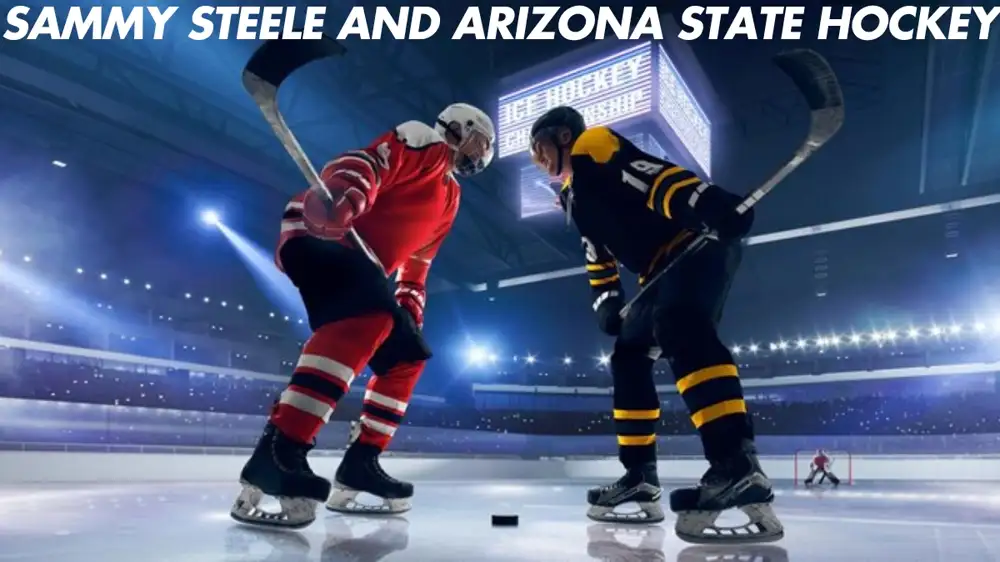
Sammy Steele and Arizona State Hockey have become synonymous with determination and growth in the sport. When you think of college hockey, powerhouse programs like Michigan, Minnesota, or Boston College might come to mind. But over the past decade, Arizona State University (ASU) has carved out its legacy—and players like Steele are at the heart of that story. A dynamic forward known for his grit, skill, and leadership, Steele has become a cornerstone of ASU’s hockey program. In this article, we’ll dive into his journey, his impact on the team, and why he’s a name to watch in college hockey.
Who Is Sammy Steele?
Sammy Steele grew up in a hockey-loving family in Edina, Minnesota, a suburb known for producing top-tier talent. From the moment he laced up his skates at age four, it was clear he had a natural knack for the game. By his teens, he was dominating local leagues, earning a reputation as a playmaker with a relentless work ethic. His ability to read the ice and deliver clutch performances caught the attention of junior league scouts, and he eventually spent two seasons honing his skills in the USHL (United States Hockey League) before committing to Arizona State.
Steele’s decision to join ASU in 2021 was a turning point—for both him and the program. At the time, the Sun Devils were still building their identity as a Division I team. For Steele, it was an opportunity to be part of something new, to help shape a rising program while pursuing a degree in sports journalism.
Arizona State Hockey: From Club Team to National Contender
Before diving deeper into Steele’s contributions, it’s worth understanding the unique story of Arizona State hockey. Unlike traditional hockey schools, ASU’s program began as a club team in 1985. For decades, players juggled academics, part-time jobs, and games against other club squads. But in 2015, everything changed when the university elevated hockey to NCAA Division I status—a bold move for a school in the desert.
The transition wasn’t easy. Early seasons were marked by growing pains, including limited funding and sparse fan support. But by the late 2010s, the Sun Devils began turning heads. They secured upsets against ranked opponents, recruited blue-chip prospects, and built a state-of-the-art arena, Mullett Arena, which they now share with the NHL’s Arizona Coyotes. Today, ASU competes in the Independent Collegiate Hockey Conference (ICHC) and is knocking on the door of college hockey’s elite.
Sammy Steele’s Impact on the Ice
When Steele arrived at ASU, the team was in search of a leader who could elevate its offense—and he delivered. As a freshman, he tallied 18 goals and 22 assists, earning him a spot on the All-Rookie Team. But his value goes beyond stats. Coaches and teammates praise his hockey IQ, two-way play, and knack for stepping up in critical moments.
Playmaking Prowess
Steele’s style blends creativity with precision. Whether he’s threading a pass through traffic or snapping a wrist shot past a goalie, he plays with a confidence that inspires his linemates. “Sammy sees the game in slow motion,” says ASU head coach Greg Powers. “He’s always one step ahead, which makes everyone around him better.”
Defensive Responsibility
What sets Steele apart from other forwards is his commitment to defense. He’s a regular on the penalty kill, using his speed to disrupt opponents’ power plays. “I take pride in being reliable in all zones,” Steele said in a 2023 interview. “Scoring goals is fun, but preventing them is just as important.”
Leadership by Example
By his junior year, Steele was named team captain—a testament to his work ethic and character. Teammates describe him as a vocal yet approachable leader who leads drills with intensity and mentors younger players. “He’s the first guy at practice and the last to leave,” says sophomore defenseman Jake Larkin. “You can’t help but follow his example.”
Memorable Moments in a Sun Devil Jersey
Steele’s career at ASU has already produced plenty of highlights. Here are a few that stand out:
- The Overtime Winner Against Michigan (2022)
In a thrilling matchup against the storied Wolverines, Steele scored a breakaway goal in overtime to seal a 4-3 victory. The goal not only went viral on social media but also signaled ASU’s arrival as a team capable of competing with anyone. - Hat Trick vs. Boston University (2023)
Steele netted three goals in a 5-2 win over BU, showcasing his scoring touch and earning him NCAA Player of the Week honors. - 2023 NCAA Tournament Appearance
Under Steele’s leadership, ASU clinched its first-ever NCAA tournament bid. Though the Sun Devils fell in the first round, the milestone marked a new chapter for the program.
Off the Ice: Steele’s Community Roots
While Steele shines on the ice, he’s equally passionate about making a difference off it. He’s actively involved in ASU’s “Hockey for Her” initiative, which encourages young girls to take up the sport, and volunteers at local schools to promote fitness and academics.
“Hockey gave me so many opportunities,” Steele says. “If I can help kids find that same joy, whether through sports or education, that’s a win for me.”
He also balances athletics with academics, maintaining a 3.8 GPA as a sports journalism major. “I want to stay connected to hockey after I hang up my skates,” he explains. “Telling athletes’ stories, maybe even coaching someday—that’s the dream.”
The Future of Sammy Steele and ASU Hockey
As Steele enters his senior year, the buzz around his future is growing. NHL scouts have taken notice of his versatility and leadership, and he’s projected to be a mid-round pick in the 2024 draft. But Steele remains focused on unfinished business at ASU.
“We want a national championship,” he says. “This program has come so far, and I know we’ve got the roster to make history.”
Meanwhile, Arizona State hockey continues its ascent. With top recruits joining the ranks and a growing fanbase filling Mullett Arena, the Sun Devils are poised to become a perennial contender. Steele’s legacy will undoubtedly play a role in attracting the next generation of talent.
Why Sammy Steele Matters
Sammy Steele’s story isn’t just about goals and assists—it’s about proving that underdogs can thrive. Arizona State hockey defies stereotypes, thriving in a non-traditional market thanks to players like Steele who embrace the challenge of building something new. His dedication, humility, and love for the game embody the spirit of college athletics.
Whether he’s lighting the lamp or reading to kids at a local library, Steele represents the best of ASU hockey: passion, perseverance, and pride. And as the Sun Devils chase their championship dreams, you can bet he’ll be leading the charge.
Final Whistle
Sammy Steele’s journey from Minnesota to Arizona State is a reminder that hockey’s future isn’t confined to the frozen ponds of the North. With talent, vision, and heart, players like him are rewriting the rules and inspiring fans across the country. Keep an eye on #18 in maroon and gold—this is only the beginning.
5 Original FAQs About Sammy Steele and Arizona State Hockey
1. How does Sammy Steele’s playing style compare to current NHL players?
Sammy Steele’s game draws comparisons to two-way forwards like Boston Bruins’ Patrice Bergeron and Florida Panthers’ Aleksander Barkov. Like these stars, Steele combines offensive creativity with defensive responsibility. He’s praised for his hockey IQ, ability to win faceoffs, and knack for elevating his play in high-pressure situations. While he’s still developing his physicality, his leadership and versatility mirror the traits of NHL captains who prioritize team success over individual stats.
2. What challenges does ASU hockey face being located in a non-traditional hockey market?
Arizona’s warm climate and lack of youth hockey infrastructure create hurdles for recruiting and fan engagement. Unlike northern schools, ASU can’t rely on local talent pipelines, so coaches recruit heavily from Canada, Minnesota, and the Midwest. The program also works to grow hockey in the Southwest through youth clinics and partnerships with the Arizona Coyotes. Additionally, travel costs are higher, as the team often flies to games in traditional hockey regions. However, ASU’s sunny campus and modern facilities (like Mullett Arena) help attract players seeking a unique college experience.
3. Has Sammy Steele participated in any international hockey competitions?
As of 2024, Steele has not yet represented the U.S. in international tournaments like the World Juniors. However, his standout performance at ASU has put him on Team USA’s radar for future events. Scouts note that his defensive reliability and playmaking skills make him a strong candidate for a fourth-line or penalty-killing role in international play. If he continues to excel, a call-up to senior national team camps could be in his future post-college.
4. How does ASU hockey’s schedule differ from other NCAA teams?
As an independent program (not part of a conference like Hockey East or the Big Ten), ASU has more flexibility—and challenges—in scheduling. The team faces a mix of powerhouse programs (Michigan, Denver) and newer Division I teams (Long Island University, Alaska-Fairbanks) to build a competitive slate. Independence also means ASU isn’t guaranteed an automatic bid to the NCAA tournament, so every game impacts their postseason hopes. On the flip side, the Sun Devils can schedule high-profile matchups that boost their national profile.
5. What academic support does ASU provide to hockey players like Sammy Steele?
ASU offers robust academic resources through its Student-Athlete Development office. Hockey players receive tutoring, time-management coaching, and priority class registration to balance travel and games. Steele, for example, leveraged ASU’s sports journalism program to intern with local media outlets during the offseason. The university also partners with the NHL’s Coyotes for career development workshops, helping athletes explore paths in coaching, broadcasting, and sports management.
Games
Imagesize:2160×3840 Game of Thrones Nude Scenes – Exploring Iconic Moments & Controversy
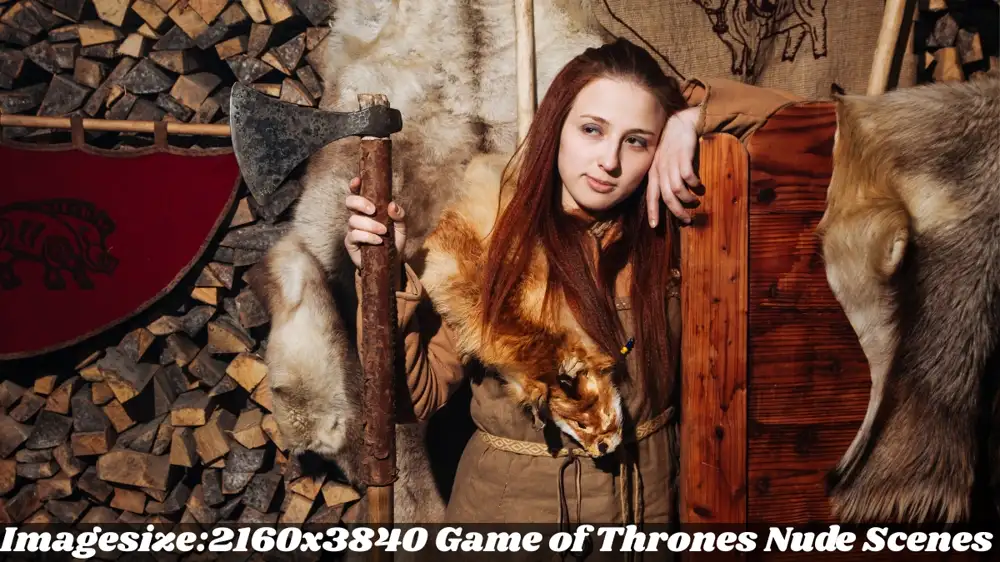
Key Points
- Research suggests nudity in Game of Thrones serves narrative purposes, like character development, and reflects the book’s gritty realism.
- It seems likely the show added more nudity than the books for viewer appeal, sparking controversy over objectification.
- Fans often search for high-resolution images (e.g., 2160×3840) of iconic nude scenes to appreciate cinematography, though reasons vary.
- The evidence leans toward mixed reception, with some praising authenticity and others criticizing gender imbalance in nudity portrayal.
Introduction to Nudity in Game of Thrones
Game of Thrones, the hit TV series based on George R. R. Martin’s novels, is known for its complex plots and stunning visuals. However, its frequent use of nudity and sexual content has sparked both admiration and debate. This article explores why nudity is included, its role in storytelling, and why fans might seek high-resolution images, such as those in 2160×3840 resolution, of these scenes.
Narrative Role and Source Material
Nudity in Game of Thrones often serves to advance the plot and develop characters. For example, Daenerys Targaryen’s rebirth from fire, emerging naked with her dragons, symbolizes her transformation into a powerful leader. Similarly, Cersei Lannister’s walk of shame, where she is forced to walk naked through King’s Landing, highlights her vulnerability and fuels her revenge arc. These moments are rooted in the books, which include explicit content to reflect historical realism, as Martin stated in an interview: “An artist must tell the truth… Rape and sexual violence have been part of every war ever fought” (George R. R. Martin on Game of Thrones and Sexual Violence).
However, the show sometimes adds more nudity, like brothel scenes with background naked women, which critics call “exposition”—delivering exposition during sexual content. This suggests the show may have amplified nudity to attract viewers, as an executive producer reportedly urged more full-frontal nudity, saying, “I represent the pervert side of the audience” (This Is Why Game of Thrones Has So Much Nudity).
Iconic Scenes and High-Resolution Interest
Key nude scenes, such as Daenerys’s rebirth, Cersei’s walk of shame, and Melisandre’s shadow baby ritual, are visually striking and plot-critical. Fans often search for high-resolution images, like 2160×3840 (4K), to appreciate the detailed cinematography, from actors’ expressions to set designs. These images help fans relive and analyze these moments, though some may have other reasons for seeking them.
Controversy and Reception
The show’s nudity has divided opinions. Critics argue it objectifies women, with more female nudity (61 instances vs. 21 for men, per Every ‘Game of Thrones’ Nude Scene, Ranked) and unnecessary brothel scenes. Defenders say it’s essential for authenticity, reflecting the books’ themes of power and vulnerability. This debate continues, reflecting broader discussions on representation in media.
Survey Note: Detailed Analysis of Nudity in Game of Thrones and High-Resolution Images
This survey note provides a comprehensive examination of nudity in Game of Thrones, focusing on its narrative role, cultural impact, and the interest in high-resolution images, such as those in 2160×3840 resolution. It expands on the direct answer, incorporating all relevant details from research to ensure a thorough understanding for readers.
Background and Context
Game of Thrones, adapted from George R. R. Martin’s A Song of Ice and Fire series, aired from 2011 to 2019 on HBO and became a cultural phenomenon. Known for its epic battles, intricate politics, and character-driven drama, it also gained notoriety for its frequent nudity and sexual content. From the pilot episode, featuring a prostitute undressing, to iconic scenes like Daenerys’s rebirth, nudity has been a defining feature, sparking discussions on its necessity and impact.
Research into the show’s creation reveals multiple reasons for this approach. The books themselves contain explicit content, with Martin justifying it as a reflection of historical accuracy. In an interview, he explained, “To omit [rape and sexual violence] from a narrative centered on war and power would have been fundamentally false and dishonest, and would have undermined one of the themes of the books: that the true horrors of human history derive not from orcs and Dark Lords, but from ourselves” (George R. R. Martin on Game of Thrones and Sexual Violence). This suggests the show’s nudity aims to stay true to the source material, grounding its fantasy in human realities.
However, the show often goes beyond the books, adding scenes like brothel settings with background nudity, which critics label as “sexposition.” This term, coined during the show’s early seasons, describes delivering plot exposition alongside sexual content, potentially to maintain viewer interest. An executive producer’s comment to director Neil Marshall, urging more full-frontal nudity and stating, “I represent the pervert side of the audience,” indicates a deliberate effort to cater to viewers who enjoy such content (This Is Why Game of Thrones Has So Much Nudity). This suggests commercial appeal as another driver, especially given HBO’s freedom from broadcast censorship, as noted in cast discussions about early production challenges (The ‘Game of Thrones’ Cast Opens Up About How Nudity Was Mishandled).
Narrative Significance and Iconic Scenes
Nudity in Game of Thrones is not always gratuitous; it often serves narrative purposes, enhancing character development and plot progression. Below is a table detailing key nude scenes, their episodes, and their significance:
| Scene | Episode | Significance |
|---|---|---|
| Daenerys’s Rebirth | Season 1, Episode 10 | Symbolizes her transformation into the Mother of Dragons, marking her rise to power. |
| Cersei’s Walk of Shame | Season 5, Episode 10 | Depicts her humiliation, fueling her revenge arc and shifting power dynamics. |
| Melisandre’s Shadow Baby | Season 2, Episode 4 | Highlights supernatural elements, crucial for Stannis’s campaign against Renly. |
| Jon Snow and Ygritte Cave | Season 3, Episode 5 | Shows intimacy, humanizing their relationship amidst war, though less plot-critical. |
These scenes are visually impactful, often shot with high detail to emphasize emotion and symbolism. For instance, Daenerys’s emergence from the fire, naked and surrounded by dragons, is a turning point, visually reinforcing her rebirth. Cersei’s walk of shame, filmed with close-ups of her expressions amidst a jeering crowd, underscores her vulnerability, a moment fans often revisit. Melisandre’s ritual, with her nudity integral to the magic, blends sensuality with horror, enhancing the show’s dark tone.
The interest in high-resolution images, such as 2160×3840 (4K), stems from the show’s cinematographic excellence. Fans seek these images to appreciate details like the texture of costumes, the lighting, and actors’ performances. For example, a 4K image of Daenerys’s rebirth allows viewers to see the flames’ glow on her skin and the dragons’ scales, enhancing the scene’s impact. This trend is evident in online discussions, where enthusiasts share and analyze such images, contributing to the show’s cultural footprint.
Controversy and Reception
The show’s nudity has elicited mixed reactions, reflecting broader debates on representation and media ethics. Critics argue it often objectifies women, with a significant gender imbalance. According to Every ‘Game of Thrones’ Nude Scene, Ranked, women were naked 61 times across seven seasons, compared to 21 for men, with only seven instances of full-frontal male nudity. This disparity is highlighted in articles like Game of Thrones’ nudity problem, which note that male characters are rarely shown fully nude, while female characters like Melisandre and Ygritte frequently bare all.
Specific criticisms include unnecessary brothel scenes, where naked women appear in the background during dialogue, seen as catering to the male gaze. The term “sexposition” has been criticized as lazy writing, with some arguing it distracts from the plot (The naked hypocrisy of Game Of Thrones’ nudity). Additionally, controversial adaptations, like the non-consensual portrayal of Daenerys and Drogo’s first encounter in the show versus the consensual book version, have been debated as undermining character agency (Why the ‘Game of Thrones’ Show Is Better Than the Books).
Defenders, however, argue that nudity is essential for authenticity, reflecting the books’ themes of power, vulnerability, and human nature. Martin himself supports this, stating, “To omit them from a narrative centered on war and power would have been fundamentally false” (George R. R. Martin on Game of Thrones and Sexual Violence). Actors like Emilia Clarke, who played Daenerys, have defended their nude scenes, with Clarke saying, “I just wanted to come out and do an empowered scene that wasn’t sexual – it was naked, but it was strong” (The ‘Game of Thrones’ Cast Opens Up About How Nudity Was Mishandled).
This controversy reflects broader cultural discussions, with some viewing the nudity as artistic expression and others as exploitative. The show’s creators, David Benioff and D.B. Weiss, have faced scrutiny, with early production challenges noted in cast accounts, suggesting initial mishandling of sensitive scenes (The ‘Game of Thrones’ Cast Opens Up About How Nudity Was Mishandled). HBO’s mandate for an intimacy coordinator in 2018 indicates efforts to address these concerns, showing evolving industry standards.
Cultural Impact and Fan Engagement
The interest in high-resolution images, particularly of nude scenes, underscores the show’s cultural impact. Fans’ searches for 2160×3840 images reflect a desire to engage deeply with the content, whether for artistic appreciation or other reasons. This trend is supported by online platforms where fans share and discuss such images, contributing to the show’s legacy. For instance, discussions on platforms like Reddit highlight fans’ interest in analyzing cinematography, with posts noting the visual detail in scenes like Cersei’s walk of shame (r/freefolk on Reddit).
This engagement also fuels debates on social media, with X posts reflecting divided opinions on nudity’s necessity. Some praise the show’s boldness, while others criticize its excess, mirroring the broader discourse. The show’s international popularity, boosted by its explicit content, is noted in discussions about HBO’s production strategy, suggesting nudity played a role in global sales (r/freefolk on Reddit).
Conclusion
Nudity in Game of Thrones is a multifaceted issue, serving narrative purposes while sparking controversy over representation and ethics. Its inclusion, rooted in the books’ realism and amplified for viewer appeal, has shaped the show’s identity and cultural impact. As fans continue to explore high-resolution images, such as those in 2160×3840 resolution, and debate its merits, the discussion reflects ongoing conversations about storytelling and media responsibility. This analysis, based on extensive research, provides a comprehensive view for readers seeking to understand this complex aspect of the series.
Key Citations:
- George R. R. Martin on Game of Thrones and Sexual Violence
- This Is Why Game of Thrones Has So Much Nudity
- Every ‘Game of Thrones’ Nude Scene, Ranked by Relevance
- The ‘Game of Thrones’ Cast Opens Up About How Nudity Was Mishandled
- Why the ‘Game of Thrones’ Show Is Better Than the Books
- Game of Thrones’ nudity problem detailed analysis
- The naked hypocrisy of Game Of Thrones’ nudity critique
- r/freefolk on Reddit Blackwater director Neil Marshall experience
Games
FA Whole Game: Revolutionizing Football Administration Through Digital Innovation
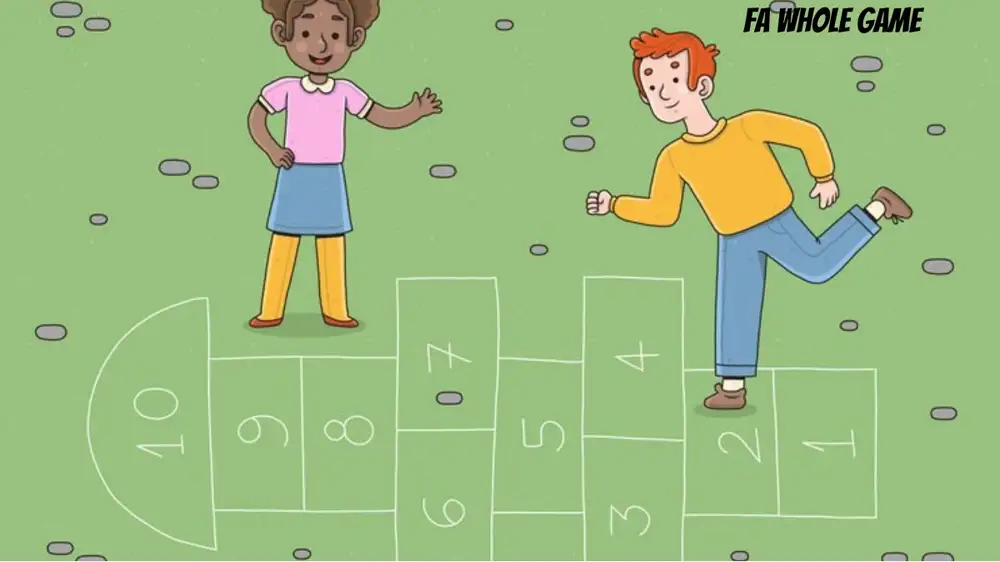
The FA Whole Game System is a transformative digital platform reshaping football administration across England. Developed by the Football Association (FA), this integrated system streamlines tasks like player registration, fixture scheduling, and disciplinary management. By replacing outdated paper-based processes, the FA Whole Game System empowers clubs, leagues, and officials to focus less on bureaucracy and more on the sport itself. This article explores the system’s features, benefits, challenges, and its profound impact on grassroots football.
The Evolution of Football Administration: From Paper to Digital
For decades, football administration relied on manual processes. Club secretaries juggled paper forms, mailed registrations, and tracked fixtures using spreadsheets. Disciplinary actions suffered delays, and communication gaps plagued leagues. Recognizing these inefficiencies, the FA launched the Whole Game System in 2014. This digital solution aimed to centralize operations, reduce errors, and foster transparency. Today, over 100,000 teams and 1.5 million players use the platform, marking a seismic shift in how football is managed.
Key Features of the FA Whole Game System
Player Registration and Management
The system simplifies player registration with online forms and instant verification. Clubs can upload documents, track eligibility, and manage squad lists in real time. This feature ensures compliance with FA regulations, reducing the risk of fielding ineligible players.
Fixture Scheduling and Management
Creating balanced fixtures across multiple leagues once took weeks. The FA Whole Game System automates scheduling, considering factors like venue availability and team travel. Clubs receive instant updates, minimizing conflicts and last-minute changes.
Disciplinary Actions and Compliance
The platform digitizes misconduct reporting, allowing referees to submit incidents directly. Clubs and players access disciplinary records instantly, while automated alerts ensure timely fine payment. This transparency reduces disputes and speeds up resolution.
Communication and Collaboration Tools
Integrated messaging keeps clubs, officials, and leagues connected. Announcements, fixture changes, and policy updates reach stakeholders instantly, fostering a cohesive football community.
Benefits for Grassroots Football
Streamlined Processes
By automating administrative tasks, the system saves clubs countless hours. Volunteers now dedicate more time to coaching and community engagement rather than paperwork.
Increased Transparency
Real-time access to records builds trust. Players track their disciplinary status, while clubs monitor league standings and financial obligations without ambiguity.
Enhanced Communication
Centralized messaging reduces misunderstandings. A club secretary can notify opponents about a postponed match with one click, ensuring all parties stay informed.
Data-Driven Decisions
The system aggregates data on participation rates, disciplinary trends, and fixture patterns. Leagues use these insights to improve scheduling fairness and address recurring issues.
Challenges in Implementing the FA Whole Game System
Adoption Hurdles
Transitioning from traditional methods faced resistance. Older volunteers, unfamiliar with digital tools, required training and reassurance about data security.
Technical Issues
Early users reported glitches, such as slow load times during peak registration periods. The FA addressed these through system upgrades and expanded server capacity.
Training and Support Needs
Successful implementation relied on accessible training resources. The FA launched video tutorials and regional workshops to ease the learning curve.
The Future of Football Administration: Innovations and Expansions
The FA plans to integrate artificial intelligence for predictive fixture scheduling and misconduct analysis. Mobile app enhancements aim to let managers submit line-ups via smartphones. Additionally, partnerships with youth leagues could expand the system’s reach, nurturing future talent through efficient administration.
5 Relevant FAQs
1. How does the FA Whole Game System handle data privacy and security?
The FA Whole Game System prioritizes data security by adhering to GDPR and employing advanced encryption protocols. Personal information, such as player details and disciplinary records, is stored securely and accessible only to authorized users. Clubs and leagues must comply with FA guidelines to ensure data is handled responsibly, minimizing risks of breaches or misuse.
2. Can non-league or amateur clubs access the FA Whole Game System?
Yes, the FA Whole Game System is designed to support all levels of football, including non-league and amateur clubs. These clubs benefit from streamlined registration, fixture management, and communication tools, just like professional teams. The system ensures that even smaller clubs with limited resources can operate efficiently and focus on growing the game.
3. What happens if a club or league faces technical issues with the FA Whole Game System?
The FA provides dedicated technical support to assist clubs and leagues experiencing issues. Users can access a helpdesk, online troubleshooting guides, and training resources. Additionally, the FA regularly updates the system to address bugs and improve performance, ensuring minimal disruption to football operations.
4. Does the FA Whole Game System integrate with other football management tools or platforms?
Currently, the FA Whole Game System operates as a standalone platform, but the FA is exploring integration opportunities with third-party tools, such as accounting software or team management apps. This would allow clubs to synchronize data across platforms, further reducing administrative burdens and enhancing efficiency.
5. How does the FA Whole Game System support diversity and inclusion in football?
The system promotes inclusivity by simplifying registration processes for players of all backgrounds and abilities. It also ensures transparent disciplinary actions, reducing biases in decision-making. Additionally, the FA uses data from the system to identify participation gaps and implement initiatives that encourage underrepresented groups to engage with football.
Conclusion: The Impact of the FA Whole Game System on Football
The FA Whole Game System exemplifies how technology can revitalize traditional institutions. By cutting red tape and fostering collaboration, it strengthens grassroots football’s foundation. As the system evolves, its role in nurturing fairness, efficiency, and passion for the game will remain invaluable. For clubs and players alike, the FA Whole Game System isn’t just a tool—it’s the heartbeat of modern football administration.
Games
My Lucky Encounter from the Game Novel: How Chance Shapes Virtual Adventures
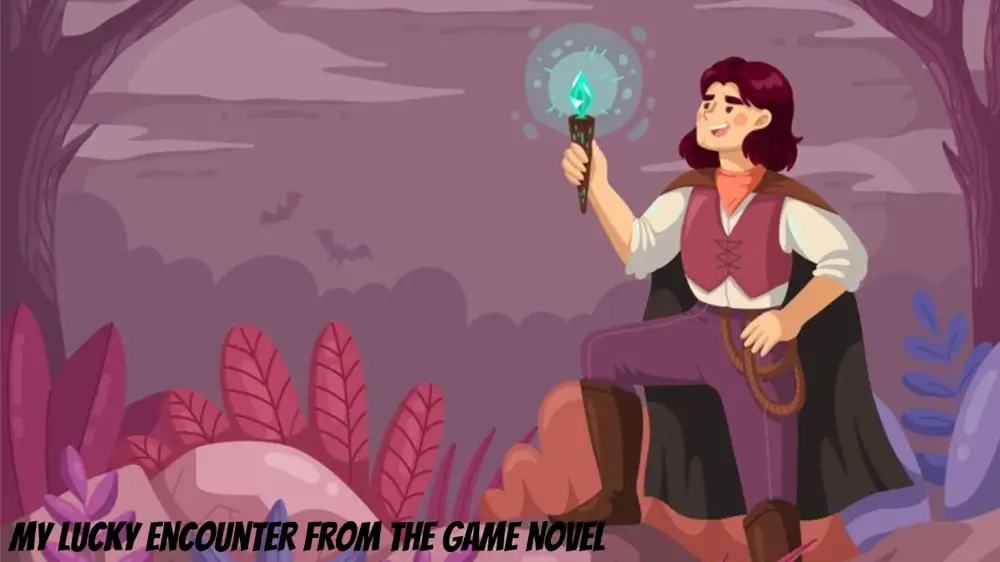
Imagine stumbling upon a hidden treasure chest in a virtual dungeon or unlocking a rare skill during a routine quest. This electrifying moment—my lucky encounter from the game novel—captures the essence of excitement in game-based storytelling. These serendipitous events propel narratives forward, deepen character arcs, and keep readers hooked. But what makes these moments so compelling? Let’s explore how luck transforms game novels into unforgettable journeys.
What Defines a Game Novel?
Game novels, often called LitRPG (Literary Role-Playing Game), blend traditional storytelling with game mechanics. Characters navigate worlds governed by stats, levels, and quests, mirroring video game structures. Readers experience progression through skill upgrades, loot drops, and boss battles, creating an interactive feel. Titles like Ready Player One and The Legendary Moonlight Sculptor popularized this genre by immersing audiences in worlds where every choice—and every lucky break—matters.
The Role of Luck in Storytelling: Beyond Deus Ex Machina
Luck has always driven plots, from ancient myths to modern dramas. In game novels, however, luck isn’t just a plot device—it’s a system. Random drops, critical hits, or hidden paths mimic real-game unpredictability. Unlike contrived deus ex machina moments, these encounters often align with in-game logic. For example, a 1% drop rate for a legendary sword feels earned, even if accidental, because players recognize the grind behind the gamble.
Memorable Lucky Encounters in Popular Game Novels
Let’s examine iconic examples where luck reshaped stories:
- Ready Player One by Ernest Cline
Protagonist Wade Watts discovers the Copper Key through sheer persistence and a dash of luck. His knowledge of 1980s pop culture—paired with a timely clue—turns a random exploration into a game-changing breakthrough. - The Legendary Moonlight Sculptor by Nam Heesung
Weed, the protagonist, stumbles upon an ancient sculpture while fleeing enemies. This lucky find not only saves him but also unlocks a unique class, altering his entire journey. - Sword Art Online: Aincrad by Reki Kawahara
Kirito’s dual-wielding skill, a rare ability granted randomly, becomes pivotal in climactic battles. This twist of fate elevates him from solo player to legendary hero.
These moments work because they blend chance with character agency, making victories feel both unexpected and deserved.
Crafting a Believable Lucky Encounter: Tips for Writers
How can authors integrate luck without breaking immersion?
- Foreshadow Subtly
Hint at possibilities early. A mention of a rumored artifact or a cryptic NPC’s dialogue plants seeds for future payoffs. - Tie Luck to Effort
Let characters earn their breaks. A rare item drop after 100 battles feels rewarding; one after five feels hollow. - Balance Risk and Reward
High-stakes scenarios amplify tension. A lucky escape during a near-death battle resonates more than a random windfall. - Avoid Overuse
Relying too much on luck undermines growth. Use it sparingly to highlight pivotal moments.
Why Do Readers Love Lucky Moments?
The appeal lies in psychology and escapism:
- Hope and Relatability
Everyone dreams of unexpected windfalls. Lucky encounters let readers live vicariously through characters, blending fantasy with wish fulfillment. - Surprise and Suspense
Predictability kills engagement. Chance elements keep stories fresh, forcing characters to adapt. - Catharsis
After pages of struggle, a lucky break delivers emotional release. It’s the narrative equivalent of a jackpot win.
Avoiding Common Pitfalls: When Luck Backfires
Poorly executed luck can ruin a story. Avoid these traps:
- Deus Ex Machina
Resolving conflicts through sudden, unexplained luck frustrates readers. Ensure events align with established rules.
Passive Protagonists
Characters shouldn’t rely solely on luck. Pair fortune with skill—e.g., a lucky crit strike during a well-planned attack.
- Stakes Erosion
If heroes escape doom too easily, tension vanishes. Let lucky saves come at a cost, like losing allies or resources.
FAQs About “My Lucky Encounter from the Game Novel”
What are some beginner-friendly game novels for readers new to the genre?
If you’re new to game novels, consider starting with Ready Player One by Ernest Cline or Ascend Online by Luke Chmilenko. These books offer accessible storytelling, engaging game mechanics, and plenty of lucky encounters to keep you hooked.
How do game novels differ from traditional fantasy or sci-fi novels?
Game novels incorporate RPG elements like stats, levels, and quests into their narratives, creating a unique blend of storytelling and gaming. Unlike traditional fantasy or sci-fi, these stories often feature progression systems, loot drops, and in-game challenges that mirror video game experiences.
Can luck-based moments in game novels feel unfair to readers?
Yes, if not handled carefully. Readers may feel cheated if a protagonist succeeds solely through luck without effort or skill. To avoid this, authors should balance lucky encounters with character agency, ensuring that fortune feels earned rather than handed out arbitrarily.
Are there real-life gaming experiences that inspire lucky encounters in game novels?
Absolutely! Many game novels draw inspiration from real-life gaming moments, such as rare item drops in MMORPGs or critical hits in tabletop RPGs. These experiences resonate with gamers and add authenticity to the storytelling.
How can I write a game novel with compelling lucky encounters?
To craft engaging lucky encounters, study game mechanics, understand probability, and integrate chance elements naturally into your plot. Foreshadow key moments, tie luck to character effort, and ensure that every twist feels both surprising and believable. Reading popular game novels can also provide valuable insights.
Conclusion: The Art of Balancing Chance and Skill
My lucky encounter from the game novel isn’t just about random chance—it’s about weaving unpredictability into a story’s fabric. When done right, these moments create unforgettable highs, deepen immersion, and mirror the exhilarating risks of real-life gaming. For writers, the challenge lies in balancing luck with effort, ensuring every twist feels both astonishing and inevitable. So, whether you’re a reader or a creator, embrace the chaos of chance. After all, the next roll of the dice could change everything.
-

 Travel7 months ago
Travel7 months agoTop 5 Ways Stephen Revetria Elevates the U.S. Travel and Tourism Advisory Board
-

 Crypto8 months ago
Crypto8 months agoUnlock 7 Powerful Cryptocurrency Insights: Delving into NewzNav.com’s Crypto Archives
-

 Technology8 months ago
Technology8 months agoHydrogen Water Machines: Revolutionizing Hydration and Wellness
-

 NEWS & Society8 months ago
NEWS & Society8 months agoChurch of the Holy Spirit News: Events & Impact
-
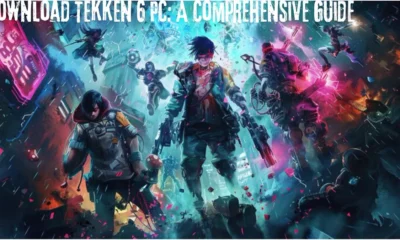
 Games8 months ago
Games8 months agoDownload Tekken 6 PC: A Comprehensive Resource
